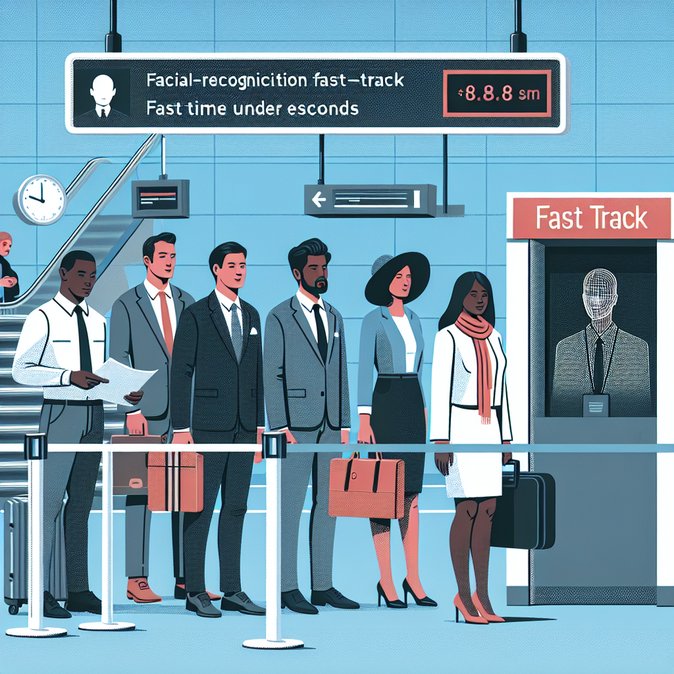
The National Immigration Administration (NIA) has taken another concrete step toward digitising China’s border by switching on “smart customs clearance” lanes at 12 ports of entry on 12 November. The new biometric corridors—rolled out at hubs such as Shanghai Hongqiao, Xiamen Gaoqi, Fuzhou Changle and Shenzhen Huanggang—use high-definition cameras to capture travellers’ facial features and match them against encrypted passport and fingerprint data in real time.
For consenting users the process is quick: travellers scan their passport, glance at the camera and walk straight through if the system finds no anomalies, a sequence that officials say takes under eight seconds. Eligible populations include mainland residents, Hong Kong and Macao residents (including non-Chinese passport holders) and Taiwan residents. Foreign visitors remain free to use staffed booths, but the NIA has signalled that the service will be gradually extended to frequent-traveller foreigners once reliability metrics stabilise.
![China Installs Facial-Recognition ‘Smart Customs’ Lanes at 12 Major Entry Points]()
The biometric roll-out is part of a ten-point immigration modernisation package announced earlier this month. Other measures—such as online arrival cards and an expanded 240-hour visa-free transit regime—take effect on 20 November, but the agency chose to fast-track smart lanes ahead of the year-end travel surge. In 2024 mainland ports processed 6.1 billion entries and exits; authorities expect flows to surpass the pre-pandemic peak in 2025.
Airports and airlines are watching closely. Faster throughput can shave minutes off aircraft turnaround times and reduce missed-connection risks—critical factors for business-travel heavy routes such as Shanghai–Tokyo and Shenzhen–Singapore. Multinational mobility managers should alert staff that enrolment is voluntary but requires travellers to allow China’s border agency to store their biometrics for future visits.
The pilot also signals Beijing’s intention to weave artificial-intelligence tools deeper into border management. Privacy advocates note that China already maintains one of the world’s largest biometric databases, while officials counter that facial recognition is optional and governed by China’s Personal Information Protection Law. Either way, companies moving staff to China will have to update data-protection notices and travel policies to reflect the new reality of touchless, camera-enabled immigration gates.
For consenting users the process is quick: travellers scan their passport, glance at the camera and walk straight through if the system finds no anomalies, a sequence that officials say takes under eight seconds. Eligible populations include mainland residents, Hong Kong and Macao residents (including non-Chinese passport holders) and Taiwan residents. Foreign visitors remain free to use staffed booths, but the NIA has signalled that the service will be gradually extended to frequent-traveller foreigners once reliability metrics stabilise.

The biometric roll-out is part of a ten-point immigration modernisation package announced earlier this month. Other measures—such as online arrival cards and an expanded 240-hour visa-free transit regime—take effect on 20 November, but the agency chose to fast-track smart lanes ahead of the year-end travel surge. In 2024 mainland ports processed 6.1 billion entries and exits; authorities expect flows to surpass the pre-pandemic peak in 2025.
Airports and airlines are watching closely. Faster throughput can shave minutes off aircraft turnaround times and reduce missed-connection risks—critical factors for business-travel heavy routes such as Shanghai–Tokyo and Shenzhen–Singapore. Multinational mobility managers should alert staff that enrolment is voluntary but requires travellers to allow China’s border agency to store their biometrics for future visits.
The pilot also signals Beijing’s intention to weave artificial-intelligence tools deeper into border management. Privacy advocates note that China already maintains one of the world’s largest biometric databases, while officials counter that facial recognition is optional and governed by China’s Personal Information Protection Law. Either way, companies moving staff to China will have to update data-protection notices and travel policies to reflect the new reality of touchless, camera-enabled immigration gates.










